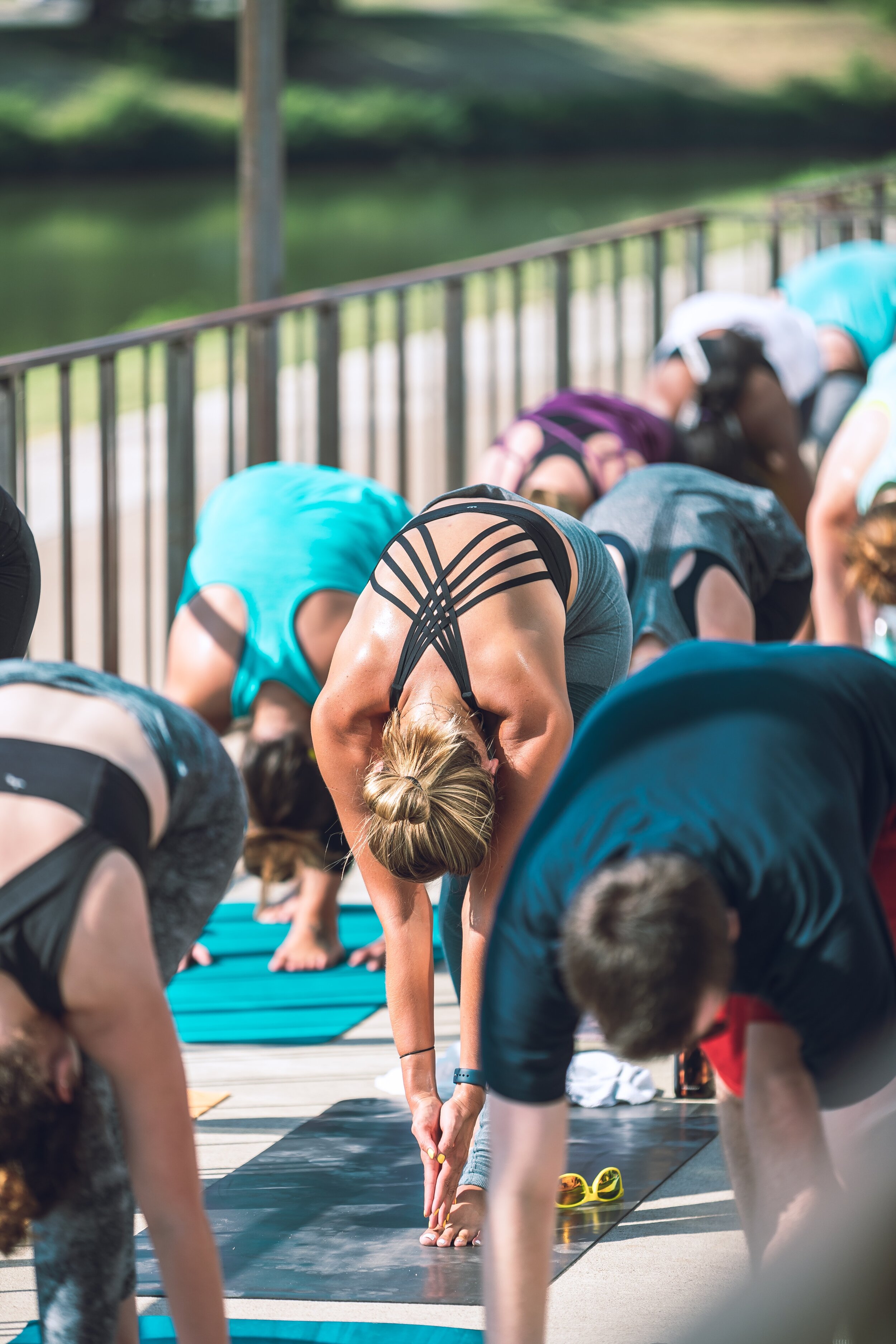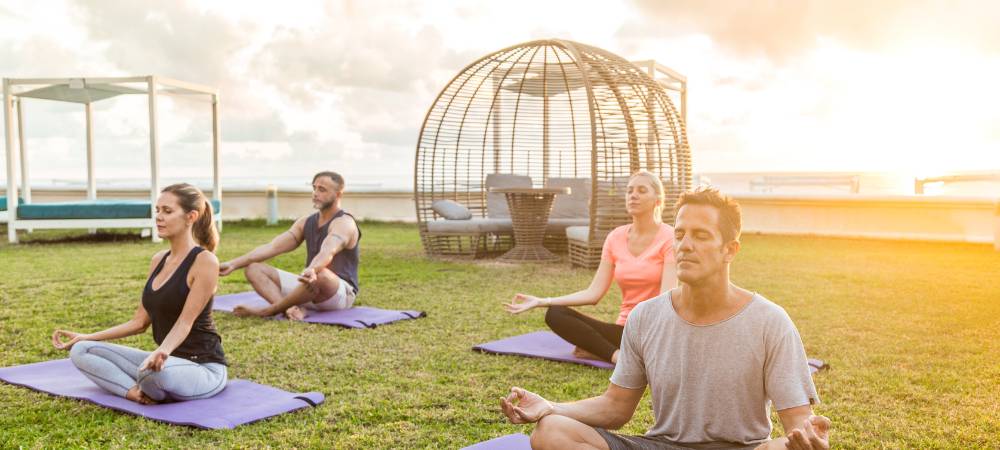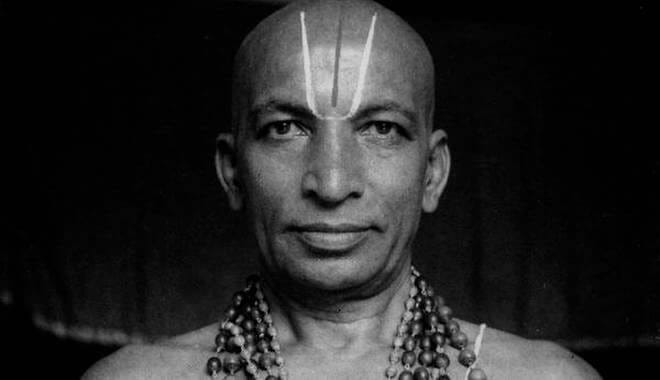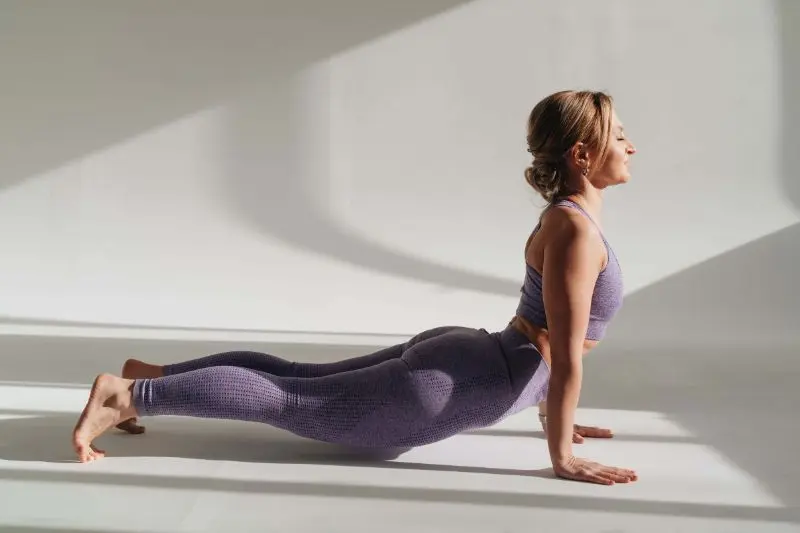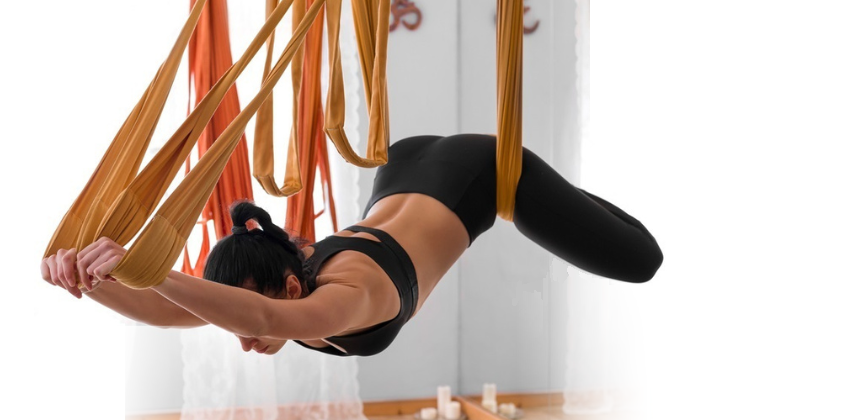
The road to fitness is not always that easy. It will require a significant adjustment in your lifestyle and mindset. Sometimes, no matter how consistent you are or how much you push yourself harder, you don’t see the results you want.
This doesn’t mean you are not working hard enough for your goals. What you can do to get out of this workout plateau is to make small changes in your fitness routine. You can tweak some of your exercises and get out of your comfort zone.
You may enroll in different classes to spice up your workout. If you’re looking for a new environment or you’re just up for a challenge, you can try a workout with aerial yoga swings and see if you like it!
Aerial Yoga Is Also a Good Cardio WorkoutThere are several articles and studies that talk about how aerial yoga can be a good cardio exercise. It is considered low-impact cardio that can also encourage fat burning. Some professionals also say aerial yoga burns the same calories as power walking.
This is good news for those who are not fans of heavy cardio exercises. Though aerial yoga seemingly has minimal impact, its routines require a lot of movement, especially in your core and upper body.
Doing aerial yoga is enough to burn calories without causing too much strain on your joints and body. This is good for people with back or knee problems. You won’t have to dread an intense fat-burning session to get your cardio in. You’ll be able to get results with aerial yoga.
Aerial Yoga Can Be Done At Home Too!Travels from home to the gym can be pretty dreadful for some people. You might find yourself choosing to go on a different route instead of getting your work out for that day. Plus, you might not feel motivated enough for the prepared exercises.
Though you could always workout with aerial yoga swings at-home, especially with the resources available, it is always good to incorporate new things to get your energy going. The good thing about this type of yoga is you can also practice it at home. You can have a good aerial yoga set up in the comfort of your home.
You won’t need a lot of expensive equipment to have a the perfect set-up. There are many aerial yoga swings and aerial hammocks that are both affordable and of good quality.
Aerial Yoga Swings Introduces Variety to Your WorkoutsSince working out can be predictable, it is important to include something in your routine that you can look forward to. Some of the things you can do would be to switch up your routines, get a workout buddy, or enroll in different classes. If you want to take it up a notch, you can try a workout with aerial yoga swings.
This has gained popularity over the years because of its unique structure and poses. You might have seen this all over social media and wondered what it’s like to do a downward-facing dog position in a hammock.
Since it’s a type of yoga, a lot of poses and practices of traditional yoga are also incorporated into this. It can be intimidating at first, but setting a new goal can help you get out of your workout rut and improve yourself better.
Workout With Aerial Yoga Swings to Build Your Core Muscles
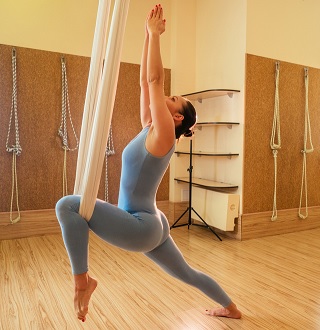
If you want to work on your core but are still dreading the usual sit-ups and Russian twists, working out with aerial yoga swings can be a good alternative. Most of the routines will require you to constantly engage your core, especially if you’re suspended in the air.
Being off the ground results in core activation since you lose your point of stability. Without completely realizing it, you’ll use your core muscles a lot.
Every time you’d switch to a different position while in the air, your core and upper body muscle do all the work for you. That is why with consistent practice, many practitioners would see a difference in their core.
It would feel firmer, tighter, and look more toned.
Granted, you’d still feel all the burn, but at least you can have all the fun while at it. Just make sure that you still maintain proper form so that you won’t harm yourself in the process. If you can consult with a professional or a more experienced yogi, that would be great. If not, you can browse the internet for blog posts, informative articles, or vlogs that can help you with broadening your knowledge on this.
In the end, it’s still important to get a professional opinion when venturing into new workout routines. This is to ensure that you are doing the right thing and not causing any injuries to your body.
Aerial Yoga Is For Amateurs and ExpertsAerial yoga is very inclusive for beginners and professionals. If you’re just starting and looking for a new experience, you’re more than welcome to try to workout with aerial yoga swings.
Many aerial yoga beginners enroll in their first class out of curiosity. It’s easy to get enticed by the silks and hammocks attached to the ceiling, as well as the inverted poses with just the aerial slings as your support.
You do not have to be trained in ballet or aerobics for you to get associated with the practice. You can enroll or try this out even without any background knowledge on it. Aerial yoga is always worth a try, whether you’re looking for a new setup or an addition to your existing workout routine.
This goes the same for those who are into yoga already or are engaged in a more active lifestyle. You might be drawn to the practice of aerial yoga because of the challenge alone. If you’re already doing consistent yoga practice, the switch to workout with aerial yoga swings won’t be as hard as you think.
Consider this as a level up from what you’re currently doing. Don’t be too intimidated by the equipment. If you’ve already gained some level of mastery of these poses on the ground, you’ll be well capable of doing it suspended off the ground.
Starting Your Aerial Yoga Swings Practice
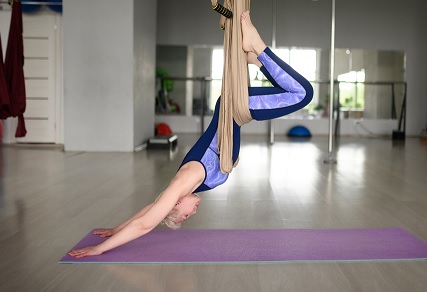
There are several ways to take your workouts to the next level and one of them is getting into aerial yoga. This is open to all ages, shapes, and sizes. You can even let kids and grandparents try these exercises with you!
The thing with aerial fitness is that you can incorporate different equipment and exercises to this as it’s not limited to aerial hammocks and silks. The devices used for this type of practice are safe and can generally support around 350 lbs.
If you want to know how you can add this to your workout, here is a guide to aerial fitness:
Prepare your mind and body. You might be used to a different set of exercises. So it’s always good to prepare your physical and mental state beforehand. Though aerial fitness is not as straining as other workouts, you still might experience dizziness or nausea, especially if you’re hanging upside down. Make sure that you get proper rest, eat a good meal, and drink plenty of water. Please also consult your doctor If you have other conditions that might be an issue later on. Having a safe workout should be your number one priority.
Additionally, you should not put so much pressure on yourself. It can be quite challenging, so know that not everyone gets the hang of it that quickly. Know that you’re there to learn and experience new things.
Know which classes suit you best. There are different classes that you can take for aerial fitness….
There’s the most common aerial yoga, which usually uses hammocks that are usually suspended from the ceiling. It is a popular choice for beginners since this is an excellent introduction to the practice, and it’s often offered at many yoga studios. Likewise there are also yoga swing/trapeze classes that also use handles to help maneuver into the poses and act as additional support throughout your sessions.
Another fitness class you can try is the aerial hoop. You might have seen this in various circus acts and acrobatic performances. It’s a good thing beginners are also encouraged to try this. It is a fun way to spice up your workout while still having fun and burning off those calories. Just like in regular aerial yoga, this also builds your core and upper body strength. This will improve your flexibility and boost your self-confidence, too!
Similar to aerial yoga, aerial silk is another practice you can venture into. The difference this has with aerial yoga is that with the latter, the fabric is made into a U-shape as the two points of suspension connect it – whereas for aerial silks, you have two single points of suspension, which gives you two separate fabrics for support. This works best for people who want to deepen their knowledge of aerial arts and eventually venture into a more artistic practice.
For more recent practices, aerial fitness also covers bungee fitness which utilizes a hip harness and bungee cord.
Get the right equipment. Alongside choosing the suitable classes is getting the right equipment for your aerial workouts. This is important to ensure that you are doing the poses and routine correctly. This minimizes risks and helps you get deeper into the practice. Make sure that the tools and devices provided for you are safe and of quality. When you are enrolled in a class, you’ll be able to limit the risk as the equipment in these studios is constantly checked and goes through a standard qualification process.
On the other hand, if you decide to do your workouts at home, you must know the suitable devices that fit your practice and space. Keep in mind that this will require extended movements; that’s why you’ll need ample space for better execution.
If you think your ceiling won’t withstand the workouts, you can check out yoga swing stands.
These things are perfect for those who cannot fully commit yet and are just looking into trying out the routines. Yoga swing stands are also portable so you can set them up inside or outside your home. You would not need a ton of people to help you with this– you can easily do it yourself!
Is Working Out With Aerial Yoga Swings Worth It?
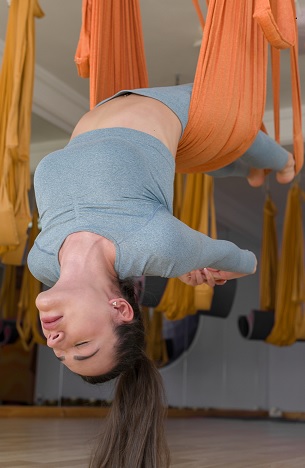
Aerial yoga, or aerial fitness in general, introduces you to a new kind of fitness. If you’re feeling idle and do not have enough motivation to go to your gym and put your workout in, a workout with aerial yoga swings might help you with that. It’s always fun to try out new things, especially if it involves antigravity fitness.
Now, you’ll be able to enjoy a good workout while being suspended in the air.
How fun is that?
There are tons of benefits that aerial yoga provides, other than a full body workout. With consistent practice, you can improve your flexibility, alleviate back pain, and better your posture.
Many practitioners also feel more confident and robust after several aerial yoga sessions. This is because your whole body gets involved in the routines and exercises.
Each session provides a different learning experience for you.
Additionally, it can also act as an escape from your busy lives. As this employs the principles of yoga, you will also feel zen after every session! Aerial yoga not only teaches flexibility and strength building but also aids in clearing your mind and having a more positive aura.
Our daily lives can be mentally taxing, so it’s always good to have an outlet where we can find comfort.
There’s no harm in trying. And besides, venturing into new things is always exciting. Do your research and enroll in an aerial yoga class near you. Don’t fear the aerial hammocks and the hanging upside down. Who knows, you might end up liking them and the practice.
[……]
Read more
